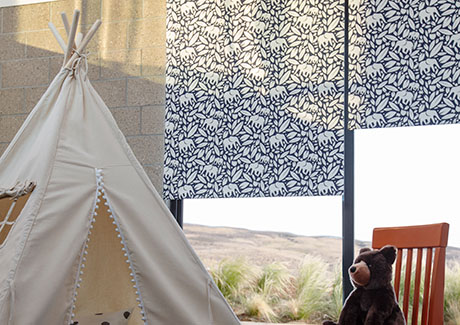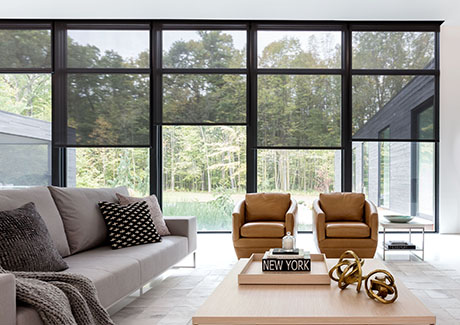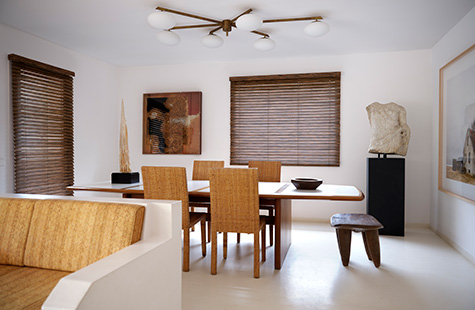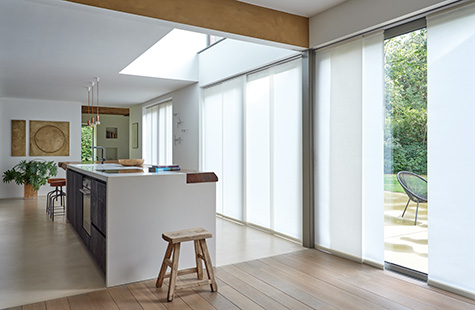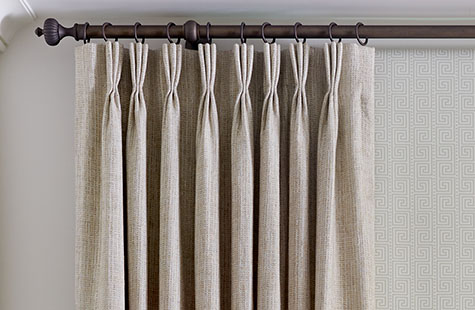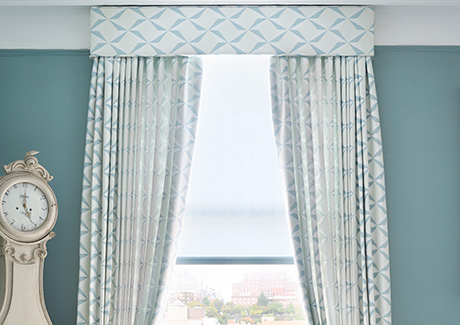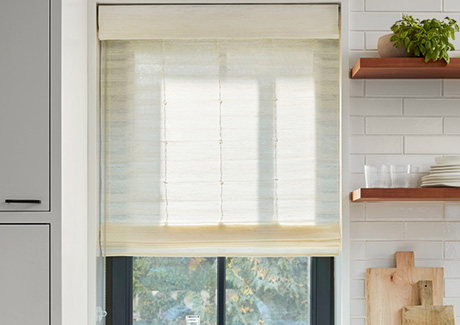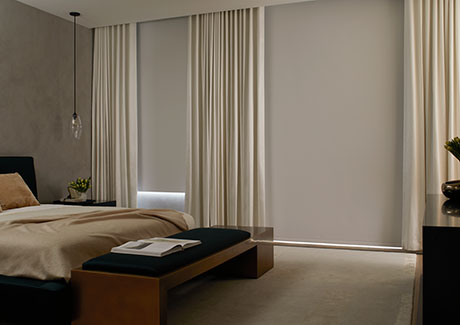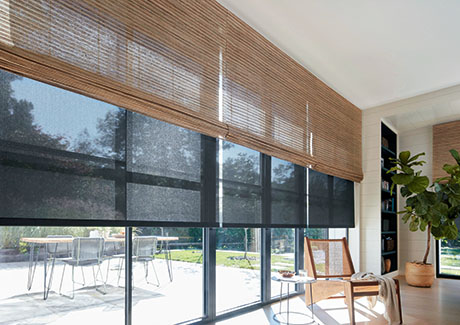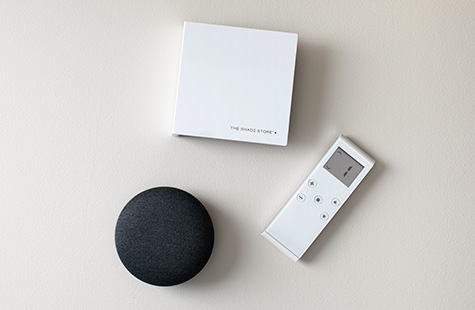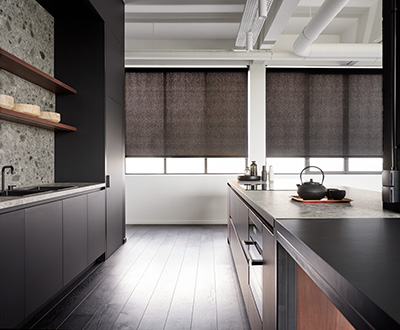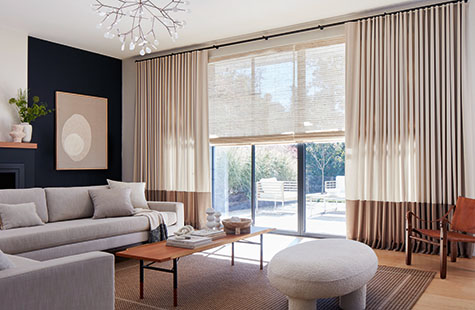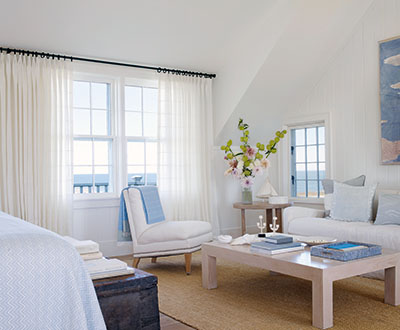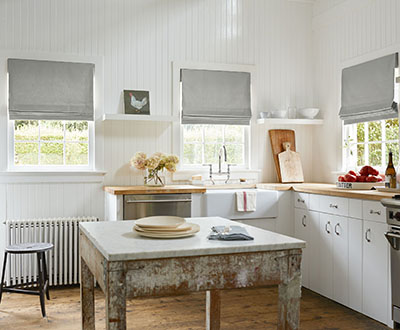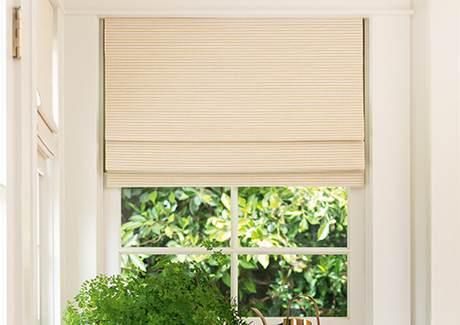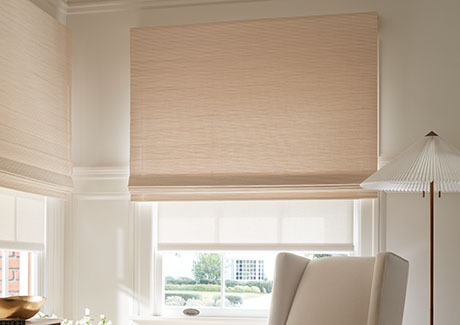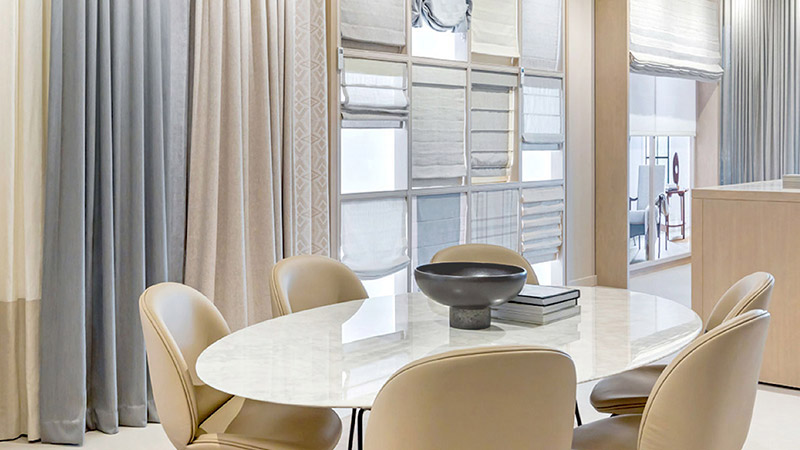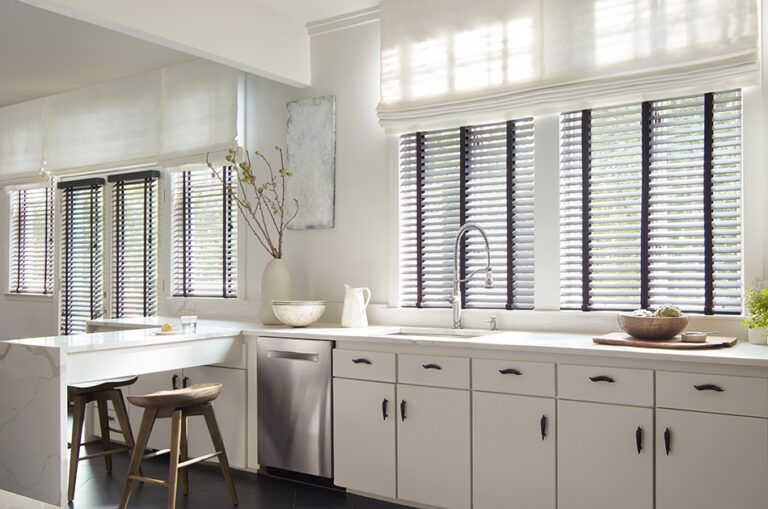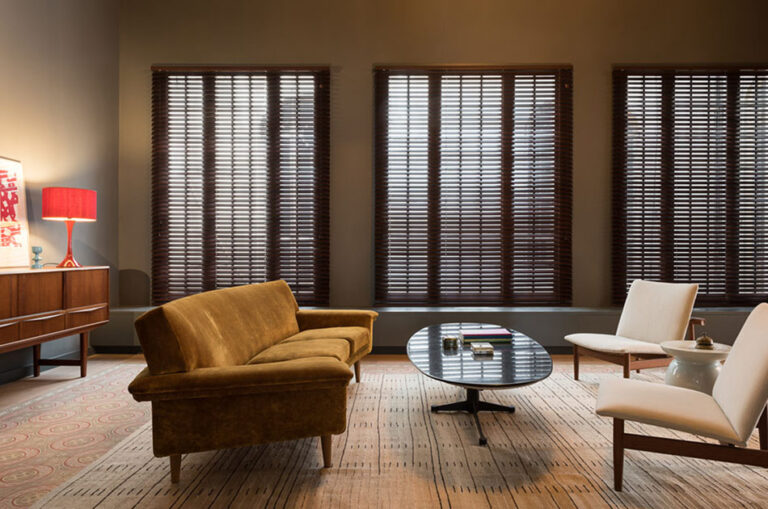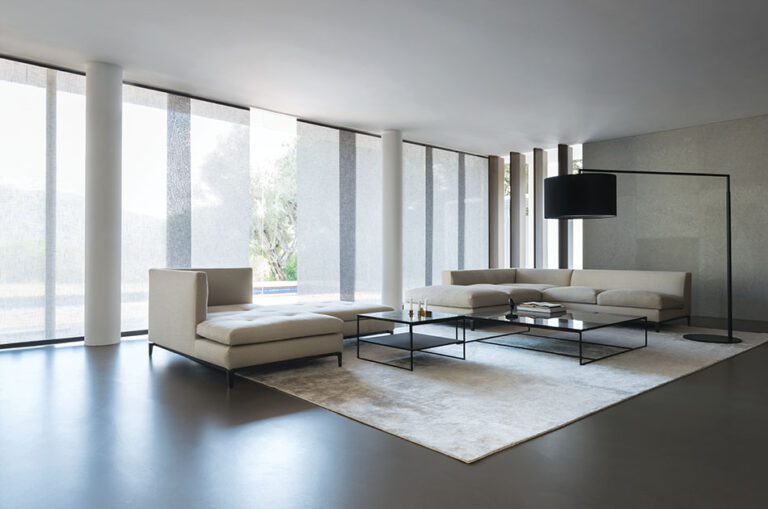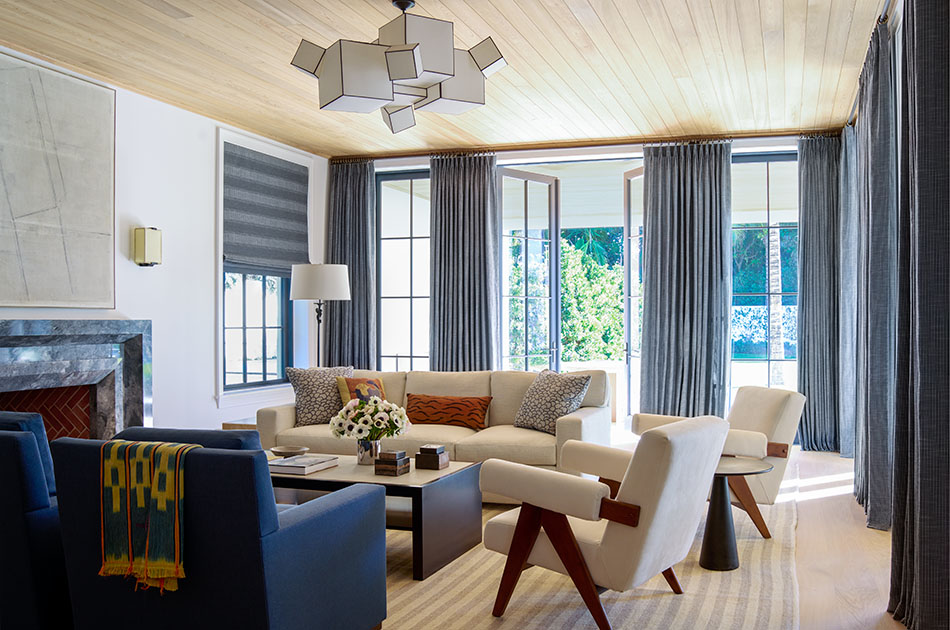
Your Guide to Window Coverings
As a homeowner, you understand the importance of having window coverings that provide privacy, light control and insulation, all while adding a touch of style to your home. However, as you begin exploring your options, you’ll realize there are many styles and types of window coverings available, each with its own unique aesthetics and functionality. And when you choose custom window treatments, there are even more choices to make in terms of material, control type, embellishments, and more.
So how do you know which custom window coverings are right for your home? First, get a broad overview of all the types of window treatments available, including Shades, Blinds and Drapery. Then, get helpful guidance on how to choose the right window coverings for your home.
In this article
Types of Window Coverings
When exploring your window treatment options, it’s important to understand the three main categories:
- Shades
- Blinds
- Drapery
Within each main category of window coverings, you have several styles to choose from, each with their own set of customization options.
Shades
Shades are a type of window covering that come in a wide range of styles and functionalities, from sleek, easy-to-use Roller Shades to elegant Roman Shades, insulating Cellular Shades and more. Learn more about each type of window shade to determine which is right for your space.
In this section
Roller Shades & Solar Shades
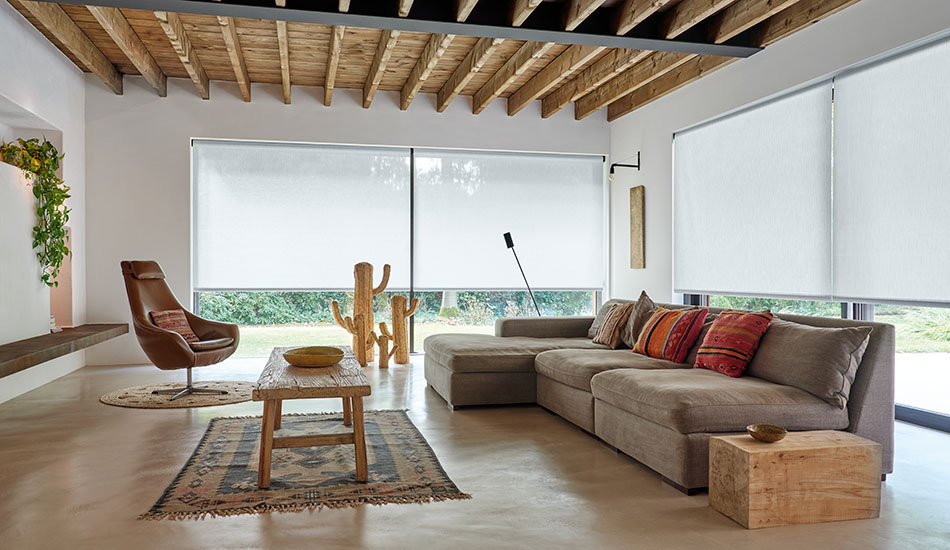
Roller Shades and Solar Shades are two popular styles of window treatments that offer various levels of light and privacy control. These shades feature similar styles, with material that rolls around a tube at the top of your window, and they also offer many of the same customizations including the same control types and optional additions like valances.
What’s the Difference Between Solar & Roller Shades?
The main difference between these two is the material used to make them.
Solar Shades vs Roller Shades
Learn more about the differences between these similar window coverings to better understand which will best suit your needs.
Explore product options as well as material selections for Roller Shades and Solar Shades.
roller shades
Discover styles and customizations to choose from.
solar shades
Discover styles and customizations to choose from.
Material Selection
Find the perfect look with the right privacy and light control.
Roman Shades
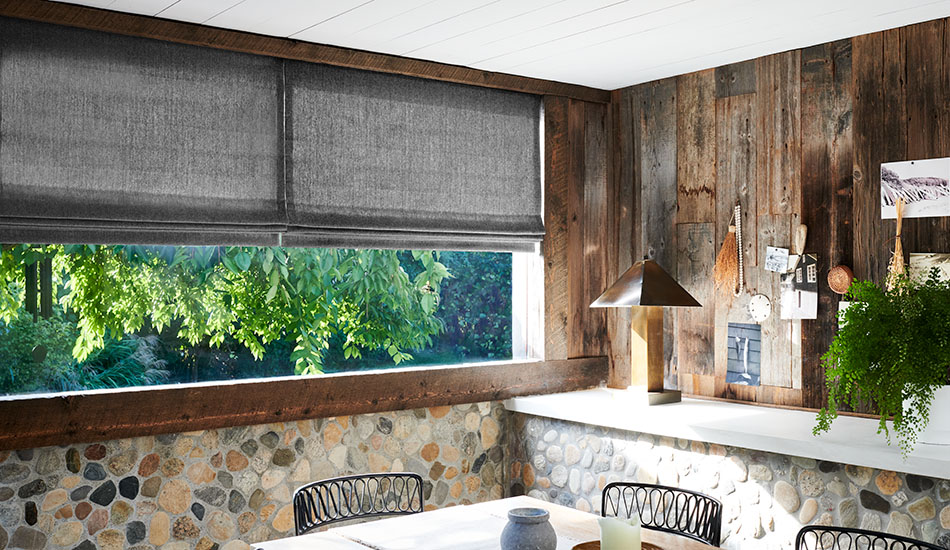
Roman Shades offer the soft elegance of Drapery with the functionality of Shades. They feature soft fabric that folds into itself when raised and unfolds in a cascading motion when lowered. Roman Shades come in a variety of styles that range in terms of aesthetics and functionality, from modern, easy-to-use styles like Flat Roman Shades to casually elegant, decorative Relaxed Roman Shades and more.
Fabric options range from natural fibers like linen, wool and silk to performance synthetics like Sunbrella® acrylic so you can find the right fit for your aesthetic style and functional needs. Plus, you also have the option to add lining to your shade to capture just the right amount of light and privacy control.
roman shades
Explore style and customization options to choose from.
Buying Guide
Learn what you need to know to make a confident decision.
Fabrics
Find the perfect color, texture and pattern for your shade.
What’s the Difference Between Roller Shades & Roman Shades?
While both these window coverings lift and lower over your window, they come in distinctive styles and offer different material choices, functionalities and more.
Roller Shades vs Roman Shades
Learn what the differences between the shades are to determine which is right for you.
Woven Wood Shades
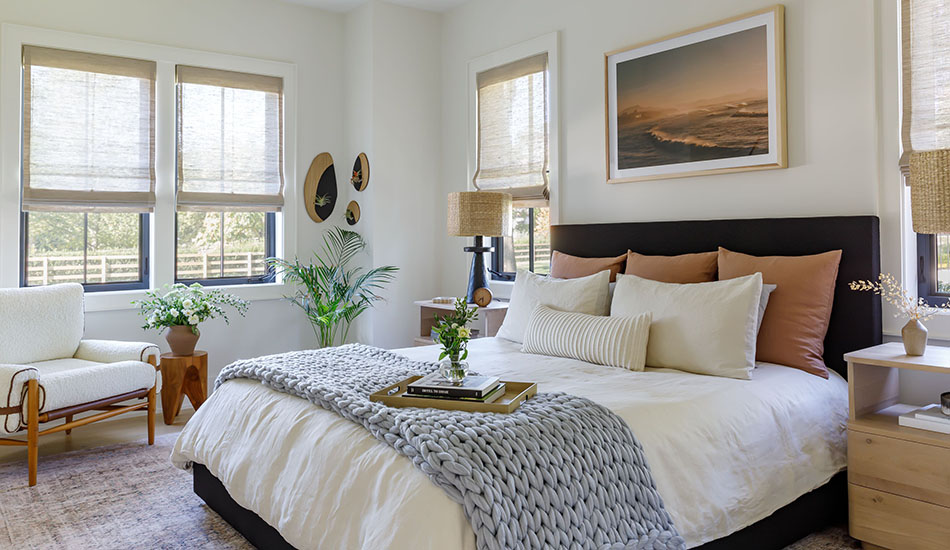
Woven Wood Shades are made from natural woven fibers like reeds, bamboo and grasses. These natural materials add texture and warmth to your home with their organic aesthetic.
These shades come in four styles, three of which are similar to Roman Shade styles, where the material folds into itself, and one of which is similar to Roller Shades, where the material wraps around a tube. All styles are functional and easy to use, however, only the Roman Shade styles offer the option to add privacy or blackout lining for better light and privacy control.
woven wood shades
Explore style and customization options to choose from.
Woven Shades Buying Guide
Learn what you need to know to make a confident decision.
woven Shade MAterials
Find the right natural woven texture for your space.
Cellular Shades
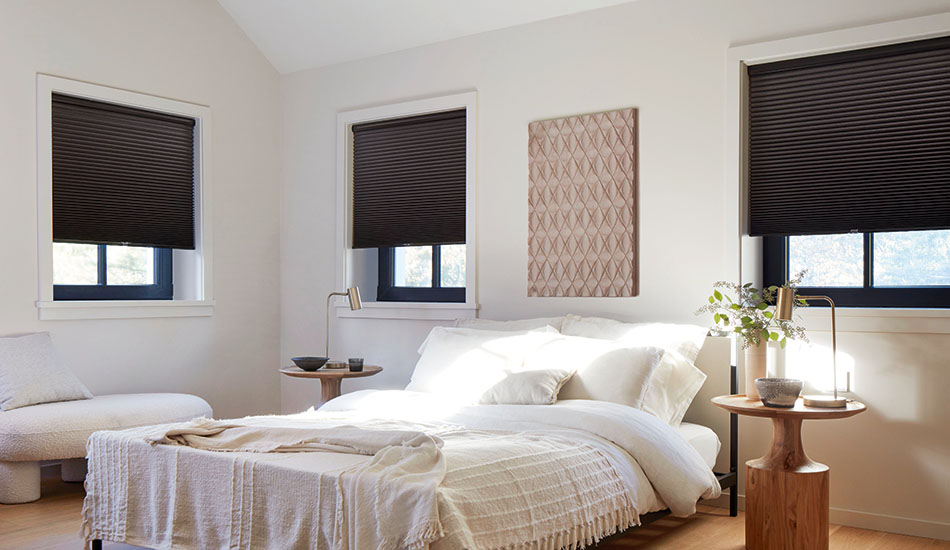
Cellular Shades feature a unique honeycomb design with pleated fabric cells that expand and contract like an accordion when the shade is raised and lowered. Cellular Shades come in single-cell and double-cell options as well as light-filtering and blackout materials. You also have the option of a Day/Night Cellular Shade that combines light filtering and blackout material on the same shade, allowing you to easily adjust your light control and privacy as needed.
Cellular Shades
Explore style and customization options to choose from.
What Are They?
Get insight into Cellular Shades to make an informed decision.
Material selection
Find the perfect color with the right privacy and light control.
Blinds
Blinds are a versatile, classic type of window treatment. They most commonly feature tiltable horizontal slats made of a hard material like wood or metal. Blinds can also feature vertical slats on a track system, made of hard textiles, similar to those used for Roller and Solar Shades. Learn more about your options for Blinds to determine if this style of window treatment is right for your space.
In this section
Wood Blinds Finishes
Discover wood finishes from painted wood to exotic grains.
Metal Blinds finishes
Discover the alluring soft sheen of metallic finishes.
vertical Blinds MAterials
Discover light-filtering materials in varying colors and textures.
What’s the Difference Between Blinds and Shades?
Both Shades and Blinds are designed to lift and lower over your window, but these window coverings have distinct differences as well. Learn more about the differences between these window treatments to better understand your options.
Blinds vs Shades
Get more insight into your options for blinds and how they differ from shades.
Drapery
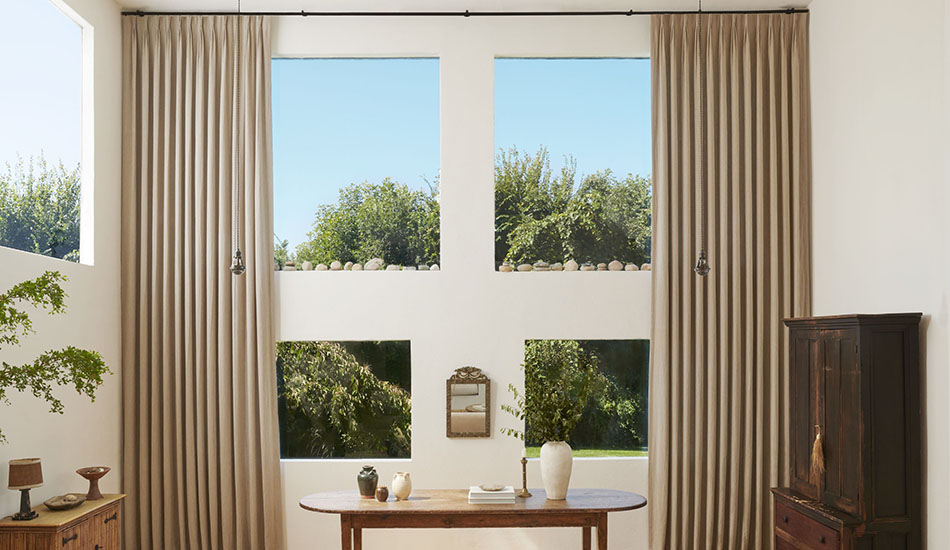
Drapery is a luxurious, elegant option for window coverings. Made of panels of fabric hung on a rod or track system, Drapery can make a big visual impact on the room, including creating a sense of height when hung high and wide above your window.
In this section
What’s the Difference Between Drapery and Curtains?
Both curtains and drapery can be used interchangeably to refer to the panels of fabric that make up these window coverings. In some cases, however, curtains may be used to refer to more casual styles of drape, as in “café curtains” while drapery can sometimes be used to refer to taller, more formal drape panels. At The Shade Store, we primarily use “drapery” and “drapes” to refer to our own products.
Dive deeper into your Drapery product options, customizations and fabric selection to explore if Drapery is the right choice for your space.
Drapery
Shop by pleat style and hardware systems for your perfect drapes.
Customizations
Explore customizations like pleat style, lining, fabric and more.
Drapery Fabrics
Find the right color, pattern and texture for your Drapery.
Which Is Better, Blinds or Curtains?
Both Blinds and Drapery offer beautiful, functional options that can suit nearly any home aesthetic. Choosing the right one for your space will depend on your specific application and personal preferences.
blinds vs curtains
Explore an in-depth comparison of Blinds vs Curtains to help you decide which is the right choice for your home.
Cornices & Valances
Cornices and valances are both finishing touches that can help complete the look of your window treatment design. Both are structures that cover the top of your window treatment, but they also have key differences.
Cornices vs Valances
Learn more about how these similar window coverings compare to and differ from one another.
Tips for Choosing the Right Window Coverings
When choosing window coverings for your home, it’s important to find the right fit in terms of light and privacy control, functionality, insulation, aesthetics and more. These tips can help guide you toward the right window coverings so you can optimize the look and functionality of your room.
In this section
Light & Privacy Control
Your light and privacy control needs are important factors for choosing the right window coverings. Is total privacy essential, or not necessary? And do you need a room darkening effect or do you want to soften the natural light?
The level of light and privacy control of your window coverings will depend on the style of window treatment you choose as well as the material, and in some cases, lining. In general, light and privacy control can be categorized into two main types of window coverings: light filtering and blackout.
Every type of window treatment, including Shades, Blinds and Drapery has both light-filtering and blackout options available, giving you the opportunity to get the light and privacy control you need with the look you want.
Learn more about light-filtering and blackout window treatments and get more advice on how to choose the right option for your space.
Light-Filtering vs Blackout Window Coverings
Get more details about light-filtering and blackout window treatments to better understand your options for privacy and light control.
Functionality
The functionality of your window treatments will vary based on the control type chosen. The control types available to you will depend on the type of window covering you choose.
Common control types include:
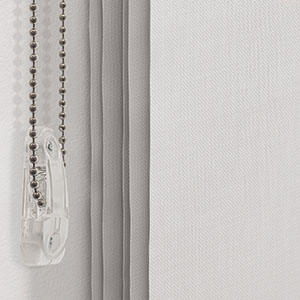
continuous loop
Available for Vertical Blinds, several styles of Shades and track system Drapery, a continuous loop system consists of a looped chain or cord, held taut by a tension device that you pull or lift to adjust your window coverings.
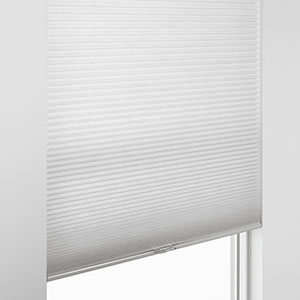
cordless
Available for most Shades, Blinds and Drapery, cordless control allows you to adjust your window treatment without the use of any cords or chains. Typically, you’ll adjust your cordless window treatments by lifting or lowering the bottom bar or ring for Shades and Blinds. For Drapery and Vertical Blinds, you’ll pull a baton.
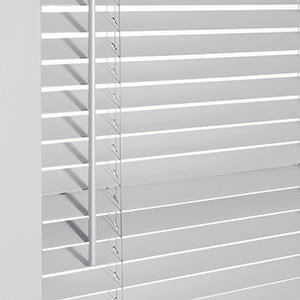
Wand Tilt
Available for all Wood and Metal Blinds, wand tilt control allows you to tilt the slats of your blinds by twisting the wand. Wand tilt control is often accompanied with cordless lift control for Wood Blinds and 2-inch Metal Blinds. For 1-inch Metal Blinds, you only have the wand tilt control functionality.
Beyond these control types, another option, available for a wide range of window coverings, is motorization.
Insulation
Insulation refers to how well your window coverings regulate your interior temperatures by blocking heat or cold from the outside. All window coverings offer some level of insulation, but certain types and materials are better than others.
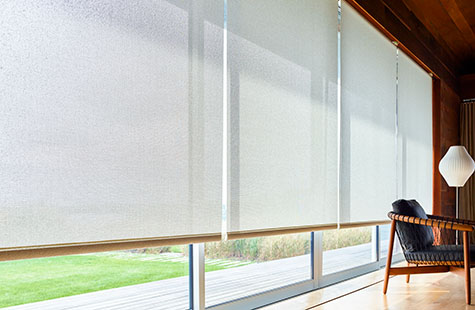
For Heat Control
Any window treatment that blocks sunlight from coming into your room will help mitigate heat buildup. Blackout window treatments can offer the best heat control, thanks to their ability to block up to 99% of sunlight. However, if you want to prevent heat buildup while still enjoying the warm glow of the sun, choose Solar Shades (pictured). These window coverings block up to 99% of the UV rays, but allow nearly all the light to filter through, so you can enjoy a bright, sunny space without the heat buildup.
For Cold Control
Any window treatment with thick, heavy fabric will work wonders in preventing a cold draft from chilling your room. Drapery and Roman Shades made of heavy wool, cotton or linen fabric act as great insulators. You can also add interlining for greater insulation, which consists of a cotton flannel insert sewn in between the Drapery or Shade fabric and privacy or blackout lining.
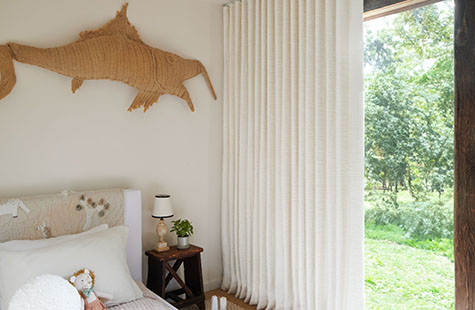
For the best of both heat and cold control, opt for Cellular Shades. These window treatments feature a unique honeycomb design, where the cells trap hot and cold air alike to keep your interior temperature comfortable all year round. Plus, they come in light-filtering and blackout materials so you can get the light and privacy control you need.
Explore Energy-Efficient Window Treatments
Dive deeper into the best window coverings for energy efficiency so your home interior is regulated better through every season.
Aesthetics
Window coverings come in a wide range of aesthetic styles from traditional to modern and everything in between. And creating the right aesthetic style will require you to choose not just the right type of window treatment, but also the right material in terms of color, pattern and texture.
Explore inspirational ideas by these aesthetic styles:
Type of Room
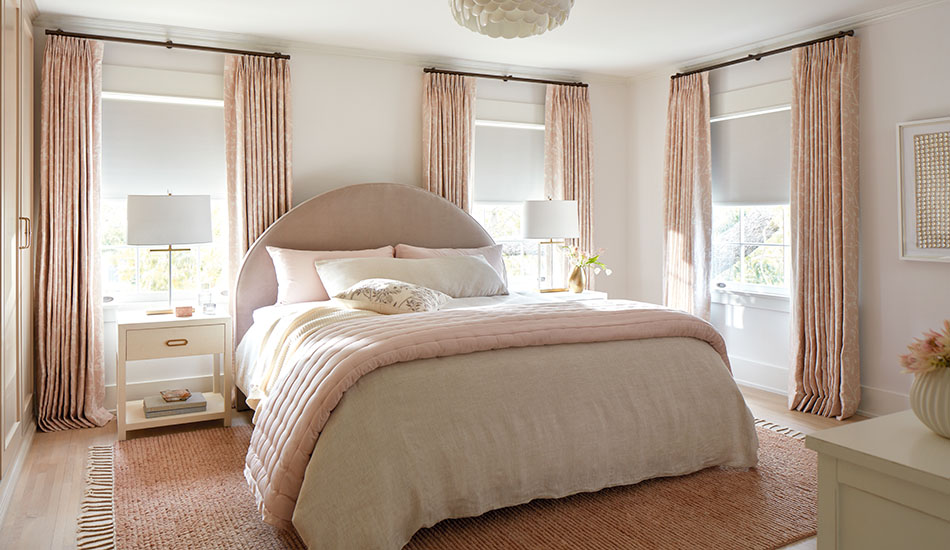
The type of room your window coverings will go in is also an important consideration as you decide which style is right for your space. Different rooms have different aesthetic, light and privacy control, and functionality needs. For instance, a living room that’s used every day may need window coverings that provide softened light during the day, but full privacy at night—and will require easy functionality for everyday use. Meanwhile, bathroom window treatments that are more often closed than not will need to provide total privacy. And bedroom window treatments likely need to provide a room darkening effect at night to promote better, more restful sleep.
Explore Window Coverings by Room
Shop for window coverings by room to help guide your journey toward the right style and customizations for every room in your home.
Cost Considerations
The cost of window coverings varies significantly in terms of style, material, control type, and more. Learn more about some of the factors that affect price for a better understanding of your budgetary needs.
- Size – The larger your window, the more material will be required for your Blinds, Shades or Drapery to cover it, which will naturally increase the price.
- Style of window treatment – Different styles of window treatment naturally use more or less material than others, which will affect their starting price. For instance, Drapery typically uses more material than Blinds or Shades because the panels need to be tall and wide to cover the window.
- Material – The type of material you choose can affect price as well, as some materials are more costly and difficult to source than others. For instance, all-natural materials like linen, silk and wool for Roman Shades and Drapery will typically be higher in price than synthetic or blended (a mix of natural and synthetic) materials. Materials from our exclusive Designer Collections, available for a wide range of window coverings, will also typically be higher in price.
- Control type – The basic control types, like continuous loop, do not cost extra for any style of window treatment, however upgrades like cordless and motorization do. Motorization will be the highest priced upgrade, but it gives you the easiest, most effortless functionality.
Measuring, Installation & Maintenance Overview
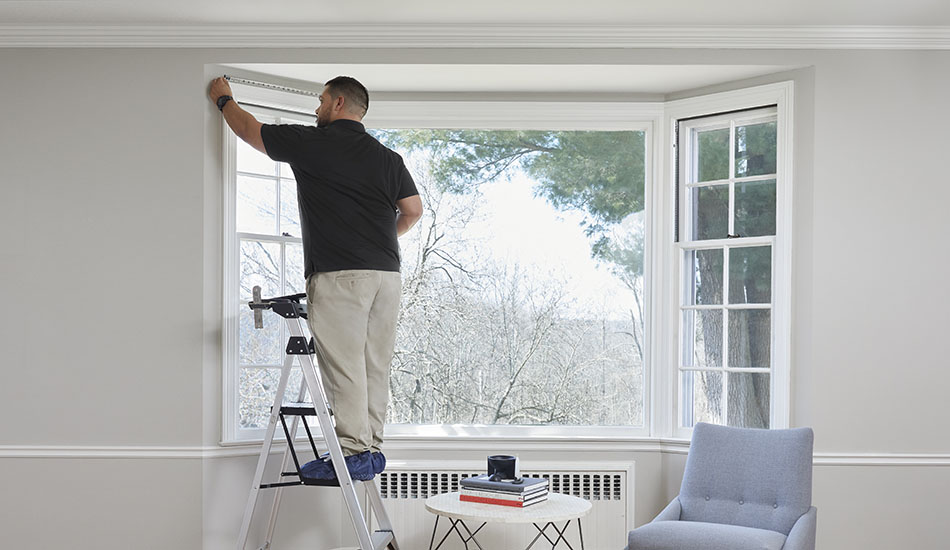
Installation and maintenance vary between the different window coverings available, as well as customizations like control type and the material you’ve chosen. However, there are common steps and best practices that apply to most, if not all, window coverings.
First, you’ll need to decide on your mount, inside your window frame, or outside your window frame, which will affect how you measure for your window treatments and how you install them. Then, learn the best practices for measuring and installation, based on mount type. Lastly, learn about the best practices for maintaining your window coverings so they stay beautiful and functional for the long term.
In this section
Inside vs Outside Mount Installation
Shades, Blinds and Drapery can be installed either inside your window frame (inside mount) or outside your window frame (outside mount) on either the wall above your window or the ceiling.
Deciding on the right one for your application will depend on a couple different factors:
- The depth of your window frame: Many window treatments require at least a ¾-inch depth to be properly secured — and they may require even more to sit flush inside your window frame. If your window frame is less than ¾-inch deep, then an outside mount is your only option.
- Your chosen control type: Different control types can affect your depth requirement and may be too large for your window box. In this case, as well, outside mount is the only option.
- Your preference: As long as your window box is deep enough to accommodate inside mount blinds, you can make your choice between inside and outside mount purely based on preference.
A Closer Look at Your Mounting Options
Get more details about inside and outside mounting and what factors can help you decide which is right for your space.
Measuring & Installation
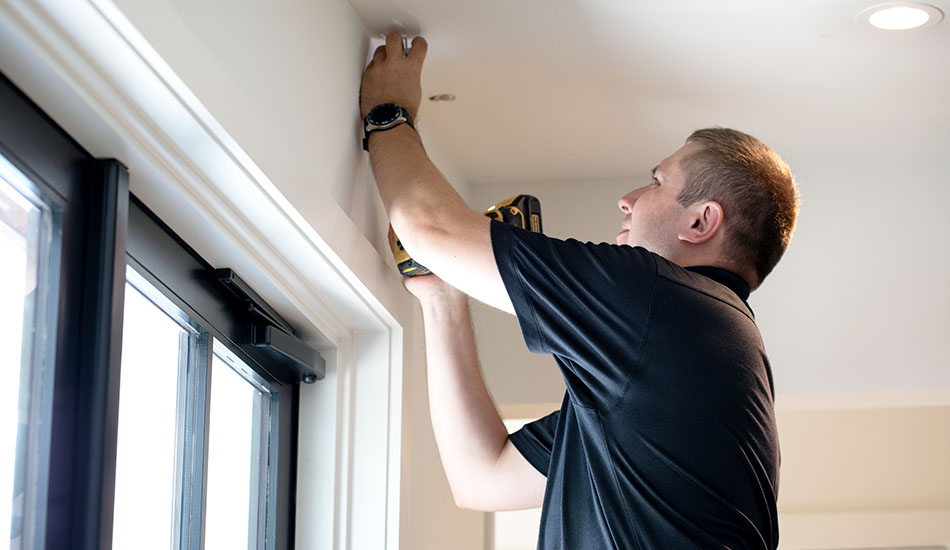
Once you decide on your mounting application, you can start preparing for ordering and installing your window coverings.
Measuring Best Practices
To properly order custom window treatments, it’s important that you measure your window carefully based on the best practices for your chosen window treatment. While the specific measuring instructions will vary depending on the exact window treatment you choose, below are the general best practices to give you a general idea of what measuring requires.
Get Measuring Instructions for Every Window Treatment
Explore all the detailed instructions for measuring for every style of Shades, Blinds and Drapery.
Installation Best Practices
Regardless of the style of window treatment you choose, there are some basic steps for installation. After you’ve decided on your mounting application and measured for your ordering width and length, these installation steps are common for most window coverings:
- Step 1: Gather tools. You’ll typically need a stepladder, pencil, tape measure, level, drill and screwdriver, but check your window treatment’s specific install instructions for an exact list.
- Step 2: Measure and mark where your mounting brackets will go.
- Step 3: Install the brackets in the right place with the appropriate tools and indicated in the installation guide for your chosen window treatment. Attach the headrail to the brackets for Blinds and Shades, and for Drapery, hang the curtain rod or track system as well as your drapery panels.
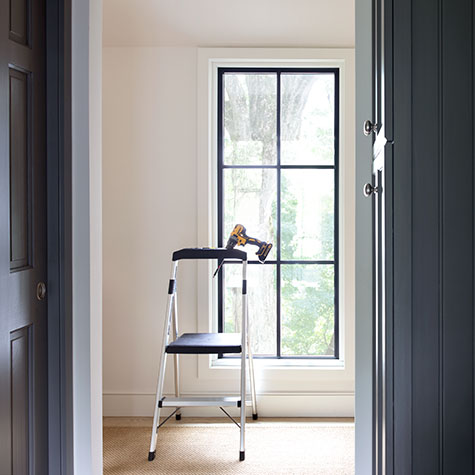
Get Installation Instructions for Every Window Treatment
Read through the detailed instructions for installation for every style of Shades, Blinds and Drapery. Always remember to read the instructions thoroughly before attempting installation.
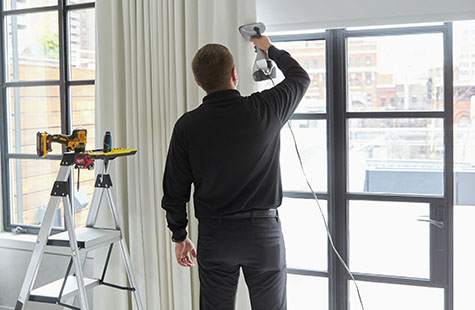
Maintenance Best Practices
Most window coverings and materials can be cleaned regularly with a handheld, low-suction vacuum to remove surface-level dust and dirt. For stains and embedded dirt, it’s best to contact a local window treatment cleaning specialist who can often clean your window treatment at home without taking it down. If you don’t have a window treatment cleaning specialist in your area, contact a carpet cleaning service as many of these offer window treatment cleaning options as well.
Explore Window Coverings in Person
With a broad overview of window coverings as well as tips for choosing the right style for your space, you’re ready to explore your options in more depth. Visit your local showroom to see interactive product displays of all window coverings, including Shades, Blinds and Drapery. Be sure to try your hand at operating different control types to get a sense for which will work best for your needs. Plus, you’ll meet our expert Design Consultants who can answer your questions and help guide you toward the right custom window treatments for every room in your home.
